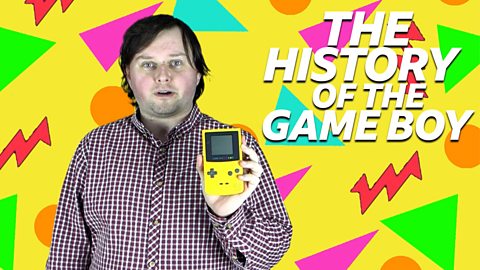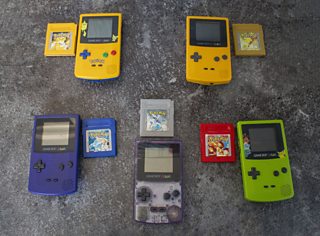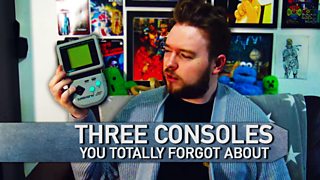Game Boy - the history of the Nintendo鈥檚 iconic handheld console
By Raymond Garrett // 大象传媒 The Social contributor // 21 May 2021
When you think of the 90s, few things are more iconic than Nintendo’s Game Boy. A handheld games console for on-the-go gaming that still holds up to this day.
Let's take a look at the history of the Game Boy.

The History Of The Nintendo Game Boy | Retro Raymond
A look at the many shapes and forms Nintendo's legendary handheld has taken over the years
When the console’s creator, Gunpei Yokoi, designed the original Game Boy, he knew that the system needed to be small, light, inexpensive and durable to stand a chance of being successful.
By following this simple mantra, the Game Boy line managed to gain a massive following despite other handheld systems on the market already having colour displays when it was released. The Game Boy was one of the first cartridge-based consoles to support networking to enable two Game Boys to be connected together for a vs match with a friend.
The game that really launched the Game Boy into the mainstream was Tetris. Tetris was already very popular and this handheld version could be played anywhere. So many people were buying Game Boys just to play the game that it was often packaged with the console itself.

In 1995, Nintendo released the “Play It Loud” versions which saw the Game Boy come in various colours - black, white, clear, yellow, green, blue and red. A year later, a smaller lighter version was released called the Game Boy Pocket. One major improvement over the original Game Boy was a black-and-white display screen, rather than the green-tinted display of the original (it also used only two AAA batteries instead of four AAs). The first version of the Pocket removed the battery indicator from the system; however, this was put back by popular demand.
A variant of the Game Boy Pocket named the Game Boy Light was exclusively released in Japan. The only differences were that the Game Boy light took AA batteries again and it had a backlit screen that could be turned on or off, something that wouldn’t be seen again until much later into the console’s life.
In 1998, the Game Boy Colour arrived.

Finally, you could play all those Game Boy games in full 8-bit colour! It was also backwards compatible with all the older games, allowing the Game Boy Colour to have an extensive catalogue of games available on launch.
It was around this time that Pokémon would really take off and its rise in popularity would also take the Game Boy along for the ride. With the Game Boy Colour not only having a link cable connector, but also an infrared sensor too for more connectivity, it was the perfect system for that series of games.
2001 introduced the world to the Game Boy Advance. It was faster, sleeker and, and had a larger, higher resolution screen. Left and right shoulder buttons were added and a library of old SNES games were remastered and ported onto the Advance system. It was also again compatible with the older system’s games, keeping in line with Nintendo’s support for backwards compatibility.
However, one of the drawbacks of the system was that it was not backlit, so it was still hard to play in some conditions, but that would soon change.
Between 2003 and 2005, the Game Boy Advance SP came along with its smaller clamshell design, front lit display, and a rechargeable battery.

No longer were you stealing batteries from the TV remote or plugging into the walls on a bulky adapter (that was more of a weapon than a plug). There was no headphone jack though, so you either played in silence or blasted those tunes loud and proud. Later, in 2005, Nintendo gave the SP a higher quality backlit screen upgrade rather than the previous SP front-lit screen. It's still sought after by collectors to this day.
2005 also brought along the last Game Boy to be made before the next generation of handhelds were released. At only four and a half inches long, two inches tall and weighing less than a sneeze, Nintendo introduced the Game Boy Micro, the smallest official Game Boy ever made.
The Micro was smaller than anything that came before but with a better and even brighter screen. However, because of the console’s size, it lost its backwards compatibility with the original Game Boy’s line of games.
This was to be the last Game Boy made before the next generation of consoles was released, and while it didn’t sell as well as expected, possibly due to the new Nintendo DS handheld console being released soon after, the Micro was a popular console back then, and still is today!




